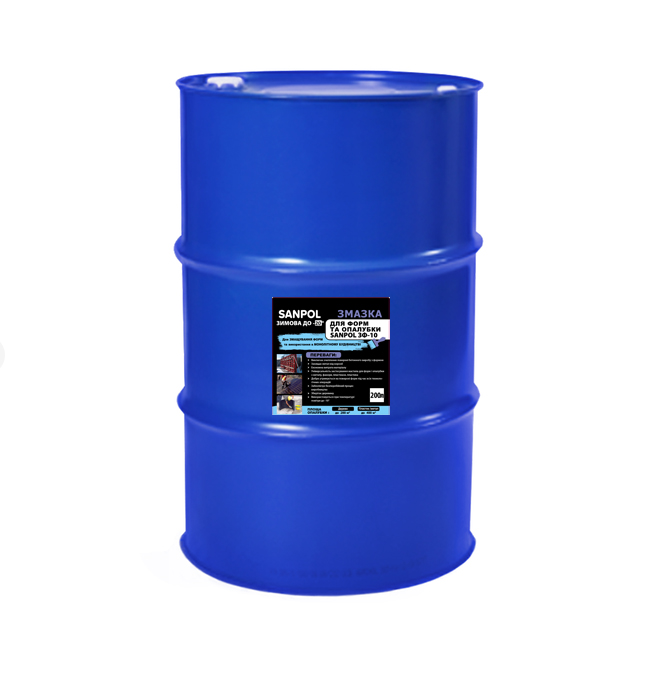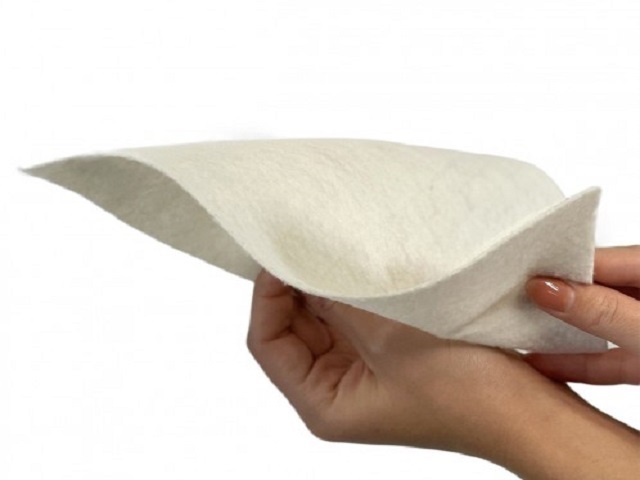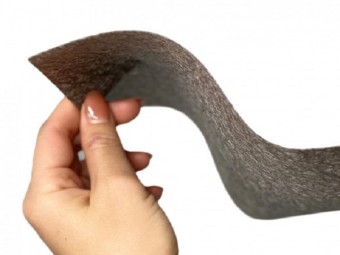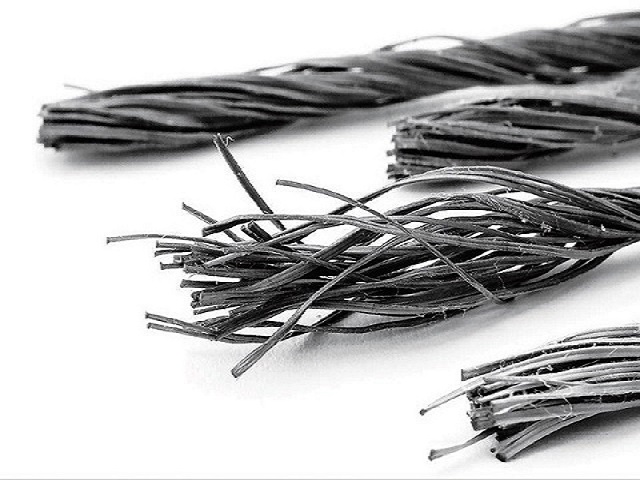Waterproofing key ND 500/35 PVC outer blue PROTEX for expansion joints, 20 m.p.
Product code: 0077
Waterproofing key ND 500/35 PVC outer blue PROTEX for expansion joints, width 500 mm, bay 20 m.p.
1007 uah
The ND 500/35 PROTEX hydraulic gasket is used for sealing and waterproofing movable joints in monolithic construction of buildings, including foundations, underground parking lots, tunnels, canals, etc. it is mounted directly on a formwork sheet. It is used in hydraulic structures - reservoirs, canals, dams, pools, etc., as well as for waterproofing joints of foundations, foundations, tunnels, multi-level parking lots and other underground structures. They are made of thermoplastic elastomer tpe (EPDM) or plasticized PVC-p polyvinyl chloride.
- allows it to be securely embedded in a concrete structure
- the presence of ribs on the locking plane prevents the penetration of moisture into the structure
- the presence of a deformable area allows you to perceive deformations of reinforced concrete structures without breaking the tightness
- It is used for sealing between two concrete structures
- in particularly important structures, it is complemented by an internal hydraulic gasket
- It can be used in structures with special requirements to ensure tightness
- withstands high water pressure inside and outside
- Suitable for all types of structures
- the hydraulic gasket is supplied in rolls of 20 m.p.
| Material | Plasticized polyvinyl chloride (PVC-p) |
| Colour | Blue |
| Packaging | Rolls of 20 m.p. |
| Roll length deviation, m, no more | ± 0,5 |
| Size deviation | According to the CD |
| Shore hardness, A | 70 ± 5 |
| Density, g/cm3 | ≈ 1,4 |
| Tensile strength, MPa | ≥10 (DIN 53455) |
| Elongation at break, % | ≥ 275 |
| Temperature resistance, °C | from -35°C to 70°C |
| Chemical resistance | - from constant exposure to water and wastewater; - from short-term exposure to inorganic alkalis and low concentration acids, mineral |
| UV resistance | Not stable |
| Service life | at least 25 years old |
Material : Plasticized polyvinyl chloride (PVC-p)
Color : Blue
Packaging: Rolls of 20 m.p.
Roll length deviation, m,: no more than ± 0.5
Size Deviation : According to CD
Shore hardness, A : 70 ± 5
Density, g/cm3 : ≈ 1.4
Tensile strength, MPa : ≥10 (DIN 53455)
Elongation at break, % : ≥ 275
Temperature resistance, °C : from -35°C to 70°C
Chemical resistance :
- from constant exposure to water and wastewater;
- from short-term exposure to inorganic alkalis and low concentration acids, mineral oils.
UV resistance : Not resistant
Service life : 25 years
Installation procedure and rules:
- The hydraulic shutter is installed in the design position, so that the middle of the hydraulic shutter is located in the center of the intended deformation seam.
- The fastening is made directly to the formwork.
- Holes for fasteners are allowed to be made only in the extreme zone of the hydraulic gasket, behind the extreme anchor.
- The mounting pitch is 200-300 mm, symmetrically on both sides.
- Additional fastening is also performed to the reinforcement frame with knitting wire.
- The connection of the key is made by welding, by heating the ends of the key in a special conductor (for each key there is an individual conductor) or using an industrial hair dryer or a flat heating element.
- The temperature of the spike is about 200 ° C (selected experimentally).
- To connect the dowels by the "cold" method, glue is used, for example, a one-component paste-like glue based on the silane-modified polymer InnoElast.
The Protex ND 500/35 blue hydroshonk PROTEX is an indispensable tool for waterproofing and sealing movable joints in monolithic buildings, which includes foundations, underground parking lots, tunnels, canals and much more.
It is easily mounted on formwork sheets, providing reliable waterproofing in hydraulic structures such as reservoirs, canals, dams, pools, as well as for joints of foundations, foundations, tunnels and multi-level parking lots.
Made of high-quality plasticized PVC-P polyvinyl chloride, our Protex ND 500/35 hydraulic gasket is distinguished not only by its excellent tightness, but also by its ability to effectively perceive deformations of reinforced concrete structures without violating its functionality.
With its help, you can safely embed it into a concrete structure, and the ribs on the locking plane will not allow moisture to penetrate inside.
The use of our hydraulic gasket contributes to a reliable seal between two concrete structures and for particularly important projects it is recommended to use it in conjunction with an internal hydraulic gasket.
What is especially remarkable is that our Protex ND 500/35 hydraulic gasket easily withstands high water pressure both from the inside and outside, which makes it an ideal choice for structures with special requirements in ensuring tightness.
In addition, it is suitable for use in all types of structures.
Our hydraulic dowels are supplied in convenient rolls 20 meters long, providing enough material for your project.
How do I install a hydraulic shutter?
- The hydraulic shutter is installed in the design position, so that the middle of the hydraulic shutter is located in the center of the intended seam.
- The fastening is made directly to the formwork.
- Holes for fasteners are allowed to be made only in the extreme zone of the hydraulic gasket, behind the extreme anchor.
- The mounting pitch is 200-300 mm, symmetrically on both sides.
- Additional fastening is also performed to the reinforcement frame with knitting wire.
- The connection of the key is made by welding, by heating the ends of the key in a special conductor (for each key there is an individual conductor) or using an industrial hair dryer or a flat heating element.
- The temperature of the spike is about 200 ° C (selected experimentally).
- To connect the dowels by the "cold" method, glue is used, for example, a one-component paste-like glue based on
- silane modified polymer Innoellast.
The Protex ND 500/35 PROTEX PVC hydraulic gasket is an ideal solution for sealing and waterproofing movable joints in monolithic construction.
Due to its unique properties, it provides a reliable and impermeable connection between concrete structures.
The blue Protex hydraulic shutter has ribs on the locking plane, which prevent moisture from entering the structure.
Due to the deformable area, it easily adapts to deformations of reinforced concrete structures without breaking the tightness.
The use of an external Protex hydraulic gasket makes it possible to effectively seal between two concrete structures, providing reliable protection from moisture.
In the case of particularly important structures, it can be supplemented with an internal hydraulic gasket to increase tightness.
Our hydraulic gasket is ideal for all types of structures and can be used even in structures with special requirements to ensure tightness.
It can withstand high water pressure both inside and outside.
The Protex hydraulic shutter is supplied in rolls 20 meters long, which provides convenience during installation.
Do not miss the opportunity to use a reliable and airtight material for waterproofing your construction projects.
How do I install a hydraulic shutter?
The hydraulic shutter is installed in the design position, so that the middle of the hydraulic shutter is located in the center of the intended seam.
The fastening is made directly to the formwork. Holes for fasteners are allowed to be made only in the extreme zone of the hydraulic gasket, behind the extreme anchor. The mounting pitch is 200-300 mm, symmetrically on both sides. Additional fastening is also performed to the reinforcing frame with knitting wire. The connection of the key is made by welding, by heating the ends of the key in a special conductor (for each key there is an individual conductor) or using an industrial hair dryer or a flat heating element. The temperature of the spike is about 200 ° C (selected experimentally). To connect the dowels by the "cold" method, glue is used, for example, a one-component paste-like glue based on
silane modified polymer Innoellast.
Related materials
Related materials
Formwork lubricant ZF-10 (200l barrel) winter
For the production of concrete products and in monolithic construction
Fixators of the protective layer of reinforcement Sprocket 30 mm. 250 pcs/ pack. Reinforcement retainer
Retainers of the protective layer of reinforcement Sprocket 30 mm protective layer. 250 pcs/pack. Reinforcement retainer for vertical reinforcement
Reinforcement clamps Flooring 15-20 mm. 250 pcs/ pack. Retainers of the protective layer of reinforcement
Retainer flooring for a protective horizontal layer of reinforcement on a loose base, soils, gravel, sand.
Geotextile with needle-punched density 150 g/sq.m for drainage (Ukraine)
For use in the arrangement of drainage systems and in the agricultural sector
Heat-treated geotextile FIBERTEX F-20, density 100g/sq.m, roll 500 sq.m (Czech Republic)
Heat-treated Fibertex geotextile for separation, reinforcement, filtration and application in the construction of highways
PolyexMesh fiber 38 mm
For reinforcement, improvement of mechanical properties and durability of concrete
Hydraulic joint PO-1 repair hydraulic joint for expansion joints , bay 20 m, gray
Repair hydraulic joint for expansion joints of the PO-1 series
© "Protex-S" LLC2021 | Website created by MD Design






